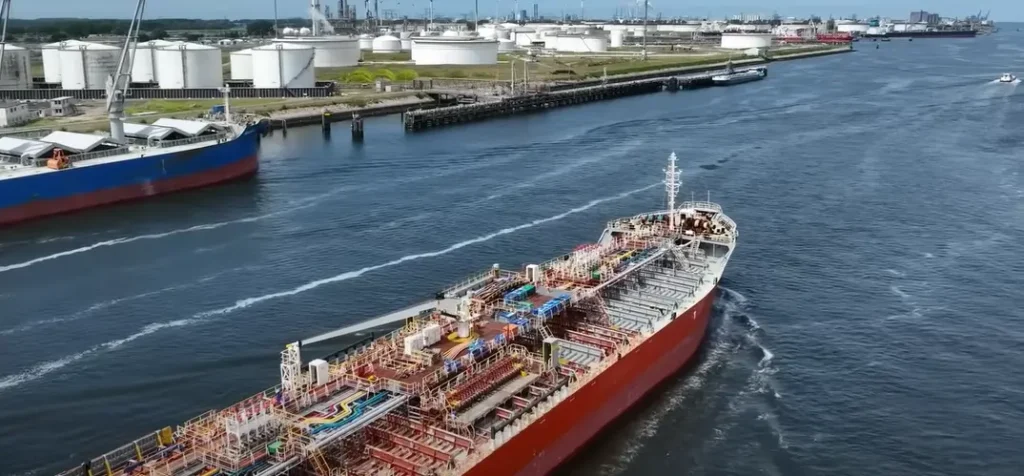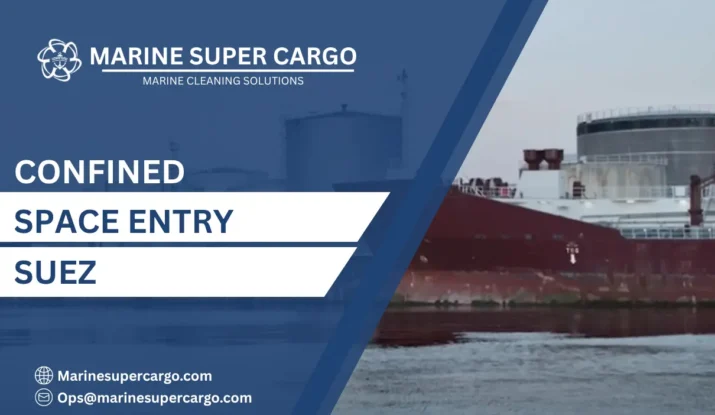Tank cleaning and maintenance operations in Suez Port frequently require personnel entry into confined spaces presenting serious safety hazards. Confined space entry Suez regulations protect workers from atmospheric dangers, physical hazards, and emergency situations within cargo tanks, void spaces, and other restricted areas. Understanding and implementing proper confined space entry Suez procedures proves essential for vessel operations throughout Egyptian waters.
At Marine Super Cargo, we specialize in compliant confined space entry Suez operations that satisfy stringent port authority requirements and international safety standards. Our experienced teams implement comprehensive confined space entry Suez protocols addressing atmospheric testing, emergency preparedness, and continuous monitoring throughout operations. Proper confined space entry Suez management prevents fatalities and serious injuries that have historically plagued maritime operations involving enclosed areas
Regulatory Framework Governing Entry Operations
IMO and SOLAS Requirements
The International Maritime Organization establishes fundamental safety principles for confined space entry through SOLAS Chapter XI-1 and associated resolutions. Resolution A.1050(27) provides specific guidance on confined space entry procedures aboard ships, forming the basis for confined space entry Suez operations. These international standards mandate risk assessment, atmospheric testing, entry permits, and emergency preparedness.
The International Safety Management Code requires shipping companies develop systematic procedures for confined space entry addressing identified hazards through documented safe work practices. Confined space entry Suez operations must align with company safety management systems demonstrating compliance during audits and inspections.
Egyptian Port Authority Standards
Suez Port Authority enforces specific confined space entry Suez requirements reflecting local operational conditions and enforcement practices. Authority inspectors verify vessel compliance with entry procedures, atmospheric testing equipment, and emergency response capabilities. Marine Super Cargo maintains current knowledge of Egyptian maritime regulations ensuring operations satisfy all local requirements.

Confined Space Classification and Hazards
Defining Confined Spaces
Confined space entry Suez regulations apply to any space with limited access, restricted egress, and not designed for continuous human occupancy. Cargo tanks throughout the vessel, from bow to stern, qualify as confined spaces regardless of size or configuration. Double bottom tanks, ballast spaces, void areas, chain lockers, and pump rooms similarly require confined space entry Suez protocols.
Atmospheric Hazards
Oxygen deficiency represents the primary atmospheric hazard during confined space entry Suez operations. Cargo residues, coating applications, and biological processes consume oxygen creating asphyxiation risks. Cargo tanks previously containing petroleum or chemical products may harbor toxic vapors including hydrogen sulfide, benzene, or other hazardous substances.
Physical and Mechanical Hazards
Beyond atmospheric dangers, confined space entry Suez operations involve physical hazards including falls from elevation, crushing risks from moving equipment, and entanglement with machinery or structural elements. The port and starboard tank surfaces may be slippery with cargo residues increasing fall risks. Heating coils, frames, and other projections create head injury hazards in restricted clearance areas.
Pre-Entry Risk Assessment
Comprehensive Hazard Identification
Before confined space entry Suez operations commence, thorough risk assessment identifies potential hazards specific to each space. Previous cargo types, cleaning status, adjacent spaces, and planned work activities influence risk profiles. Assessment teams evaluate atmospheric conditions, access/egress routes, communication requirements, and emergency response needs.
Marine Super Cargo conducts systematic risk assessments for all confined space operations in Suez Port ensuring comprehensive hazard identification and appropriate control measures.
Control Measure Implementation
Risk assessment findings determine necessary control measures including atmospheric testing protocols, ventilation requirements, personal protective equipment specifications, and emergency equipment positioning. Confined space entry Suez permits document these controls ensuring implementation before entry authorization.
Atmospheric Testing Protocols
Multi-Parameter Testing Requirements
Confined space entry Suez regulations mandate atmospheric testing for oxygen content, flammable gas concentrations, and toxic vapor levels. Testing must verify oxygen content between 20.5-23.5%, hydrocarbon concentrations below 1% LEL, and toxic gases within permissible exposure limits. Carbon monoxide, hydrogen sulfide, and other specific contaminants require monitoring based on cargo history.
Testing Methodology and Frequency
Atmospheric testing proceeds systematically throughout confined spaces from top to bottom levels. Cargo tanks require testing at multiple elevations including overhead areas, mid-height sections, and tank bottoms where vapor densities vary significantly. Testing the bow, stern, and central sections ensures comprehensive atmospheric verification.
Entry Permit System
Formal Authorization Process
Confined space entry Suez operations require written permits issued by competent supervisors following verification of atmospheric conditions, control measure implementation, and emergency preparedness. Permits specify authorized personnel, entry duration, work activities, atmospheric testing results, and required PPE. Each entry requires a separate permit as conditions change between entries.
Permit systems formalize communication between entry teams, supervisors, and vessel command ensuring all parties understand operational parameters and safety requirements. Marine Super Cargo maintains rigorous permit procedures for all confined space entry Suez services.
Permit Validity and Conditions
Entry permits typically remain valid for single work periods not exceeding specified durations. Extended operations require permit renewal following atmospheric retesting and condition verification. Permits become invalid when atmospheric conditions change, work activities vary from authorized scope, or personnel rotate requiring new authorization.
Standby Personnel and Emergency Response
Dedicated Attendant Requirements
Confined space entry Suez regulations mandate dedicated attendants maintaining constant communication with entrants and prepared to initiate emergency response. Attendants stationed outside entry points monitor atmospheric conditions, track authorized personnel, and maintain rescue equipment readiness. Under no circumstances may attendants enter spaces during emergencies without proper relief and authorization.
Emergency Rescue Capabilities
Emergency rescue equipment including retrieval systems, breathing apparatus, and medical supplies must be immediately available during confined space entry Suez operations. Rescue teams trained in confined space retrieval maintain readiness throughout entry periods. Rescue drills verify equipment functionality and team competency addressing potential emergency scenarios.
Communication Systems
Reliable communication between entrants, attendants, and supervisors proves essential during confined space entry Suez operations. Communication methods range from voice contact at entry points to electronic systems for deep tanks or noisy environments. Established signals enable emergency communication when electronic systems fail.
Documentation and Record Keeping
Comprehensive records of confined space entry Suez operations including permits, atmospheric test results, training certifications, and equipment inspections demonstrate regulatory compliance. These documents satisfy MARPOL and port authority requirements during inspections.
Frequently Asked Questions
Q1: What atmospheric conditions permit safe confined space entry?
Oxygen content 20.5-23.5%, flammable gases below 1% LEL, and toxic vapors within permissible exposure limits throughout the entire space.
Q2: How frequently must atmospheric testing occur during entry?
Continuous monitoring with portable detectors worn by entrants, supplemented by periodic testing at regular intervals.
Q3: Can personnel enter confined spaces alone?
No, confined space entry Suez regulations require dedicated attendants maintaining constant communication with all entrants.
Q4: What training is required for confined space entry?
Comprehensive training covering hazard recognition, atmospheric testing, PPE usage, emergency procedures, and rescue operations
Q5: How long are entry permits valid?
Single work periods as specified on permits, typically not exceeding shift durations, with renewal required for continued operations.
Partner with Marine Super Cargo for professional confined space entry Suez services ensuring complete safety compliance and crew protection throughout all operations.


